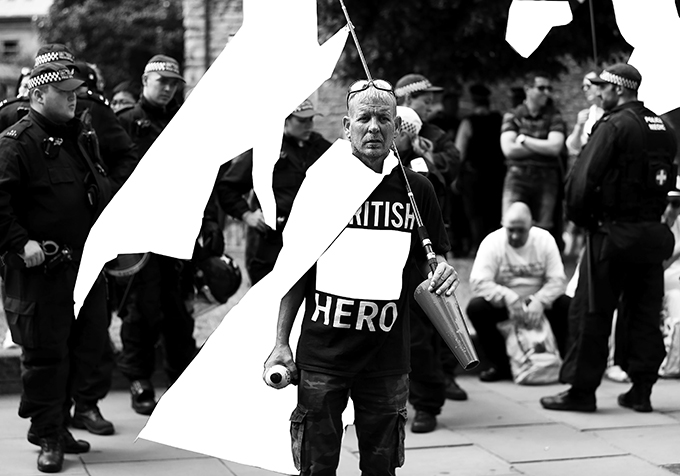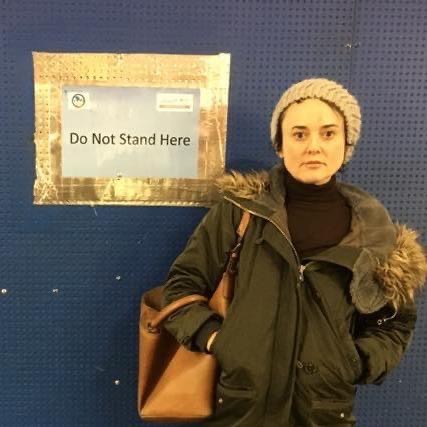No More White Flags and FORMAT21 Key Note Speaker
Photographic works that oscillate between communication artefacts, containers of data, and patchy documentations of shifting information, Clare Strand’s work occupies the multi-dimensional nature of the infrathin*. As a keynote speaker in the FORMAT International Photography Conference – where her collaborative work No More Flags was featured – she spoke about her artwork in relation to control, process, and happenstance and was joined by Cemre Yeşil Gönenli, Max Sher and Sergey Novikov for discussions on photography in response to oppressive politics and post-Soviet culture. Clare works across sculpture, photography, installation, and painting to deconstruct ideas of communication and the meaning of images in a digital age, creating mechanised situations where control is in flux and the gap between possibility and difference is undefined.
The Discreet Channel with Noise (2018), nominated for The Deutsche Borse Photography Foundation Prize 2020, examines what is lost as information travels through mediums and places. As Duchamp said, ‘the passage from one to the other takes place in the infrathin’; breaking down the language of images into coherent but contradictory sets of rules, Clare visualises this translation of information as a realm of indeterminate variables. Gridded into ‘picture elements’ and assigned a number from 1-10, images from tabloid papers were codified and dictated to Clare over the phone by her husband as she reiterated the image, painting each square a shade of grey. In George Eckhardt’s Electronic Television (1936), this same model is described as a method of communicating photographs over telegraph. The resulting images are imperfectly painted pixilations that translate the data into ambiguous and opaque forms, flattened and enlarged by the act of transmission.
No More Flags, an ongoing artwork launched in December 2021 as a part of the FORMAT Festival, subverts the noise of white supremacy via tactical redaction, emphasising the violent ideologies and behaviours of nationalist protesters in the UK and USA. Referencing Christina Sharpe’s theory of ‘black redaction’, the emblems of white male power are edited out of found photographs from far-right political protests. In their place, white blanks disrobe the protesters of imperialist merchandise and question the legitimacy of using flags to authenticate political extremes. According to Christina, the theory of redaction reconfigures ‘vision’ by establishing an ethics of seeing where dominant narratives are re-ordered. In No More Flags the control and containment of white nationalism – instated by symbolic flags – is deleted and the jarring gap between extreme ideologies and the identities of those who perpetuate them is made apparent.
Journeys which scatter and deplete information are brought to the forefront through Clare’s work and highlighted in the FORMAT conference panel discussion. In her work 10 Least Most Wanted, where randomly selected photographs from her collection of scrapbook images are displayed from the back, she subverts the formal presentation of images, challenging the space between the wanted and unwanted. In true Duchampian style, Clare’s work is situated within regulated systems of infrathin logistics, allowing the meaning and form of the work to exist in simultaneous containment and expansion.
*Infrathin is a concept conceived by the artist Marcel Duchamp, although he never fully articulated its meaning. It is commonly used in reference to the ‘unexplainable’ gap between intention/action and outcome, and most often defined via examples rather than explanations, i.e. ‘a glass half empty and half full’, or ‘a photograph of a photograph’.
By Ruth Miller
all images © McDonaldStrand













